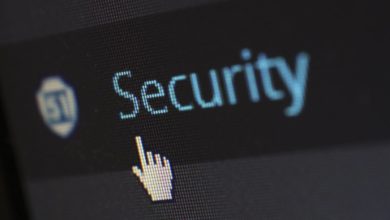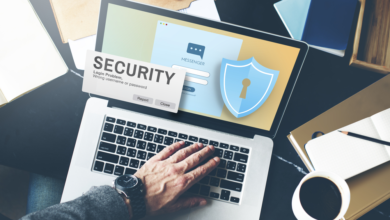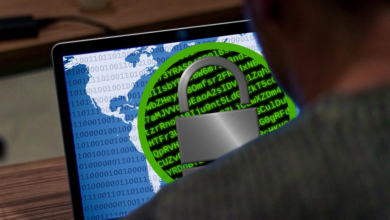How To Improve The Security Of Your Enterprise With Remote Teams On Board?
KEY TAKEAWAYS
Security breaches are becoming increasingly common for both enterprises and individuals. It is high time to consider the risks of getting your data exposed by hackers and increase awareness regarding these attacks.
The entire framework of any enterprise can collapse with a single security breach. Also, Identity theft is a common consequence of these attacks, and this can result in reputational and financial loss to the company.
As a result of the global pandemic, enterprises have shifted to remote workspaces, and this sudden change has made data breaches easier due to increased digital connectivity. Most of the security breaches that have popped up in recent news could have been avoided by adopting up-to-date technology and with a bit of awareness about the right security measures.
Having remote teams onboard makes any organization more susceptible to cyber-attacks. In this article, you’ll get to know the best ways to manage your data and adopt adequate cybersecurity measures to keep it protected from malicious entities.
How to Improve Security of Your Enterprise with Remote Teams On-Board?
The following tips will give you an idea of the threats that an enterprise can face, and the best ways to avoid them.
- Look Out for Insider Threats
Most enterprises have basic security features to protect them from external cyber-attacks. These attacks are often the most devastating ones and popularized through media outlets. But, in doing so, they forget that insider threats can also exist. These attacks are much harder to detect and avoid, as they can be quite simple.
A current or former employee with access to the organization’s network and data assets can leak them, either intentionally or unintentionally. The factors that cause insider attacks can be as simple as a careless click on an infected link by an employee. They can even result from grudge, retaliation, or espionage by dissatisfied or externally funded employees.
- Use Security Tools Like Antivirus and Firewalls
Investing heavily in proper security tools can save your enterprise a lot of money that would be required to resolve cybersecurity incidents. The better the IT infrastructure, the lesser are the chances of criminals breaching your assets.
If your company stores sensitive data, using tools like specialized antivirus solutions, and integrated firewalls can provide a much safer environment. Every organization uses some custom security solution and here is a list of such tools. A good firewall solution can detect most incoming attacks, and trigger the prevention systems in place.
- Increasing Awareness Amongst Employees
The entire security of the company can depend upon the awareness of attack prevention measures amongst employees. If even one employee falls into traps like phishing or infected links, they can unknowingly give access to the entire infrastructure of the company to hackers.
Employees need to be accordingly trained on the protection policies that the company upholds, and they should be able to differentiate between fraud and legitimate links and emails. This procedure should be integrated into the company training programs that every employee needs to go through.
- Frequent Security Audits
New forms of malware and loopholes are being discovered by hackers daily. A company can’t adopt certain security measures and just forget about them. Regular security audits are essential to keep a check on the prevention and defense mechanisms that keep the data safe.
Third-party penetration testing is one of the best ways to check if your security systems are up-to-date or not. Investing in these tests can also lead to the discovery of new loopholes, which can be fixed and reinforced to prevent attacks in the future.
- Protection from Spam Emails and Phishing Scams
Spam emails and fraudulent links are becoming more and more convincing, and this can lead your employees to unknowingly click on them, resulting in security breaches. Most technically literate individuals can avoid these by double-checking the links they click on and checking the legitimacy of a website before filling in any data.
This is even more important when you have remote teams working onboard, as most of the employees use their own devices that are most likely not as secure as the company devices. Workspace emails and personal emails should be clearly differentiated to avoid malware from infecting company assets.
- Proper Encryption on Data
One of the most effective and simple ways to protect any form of data falling in the wrong hands is to encrypt it. When your files are encrypted, they get jumbled into incoherent bits of data that cannot be used directly. A special key is required to unscramble the data and access it when needed.
With proper encryption, even if the secure data of your company gets breached, it wouldn’t be much of an issue. The hackers would only have the encrypted data, and with modern encryption methods, the breached data will be virtually impossible for them to use.
- Keep Company Devices Updated
It is essential to keep both your hardware and software updated to avoid security breaches. In case your hardware is older, there will always be entry points and loopholes that have been discovered by hackers. No software update can mitigate inherent risks in older hardware. Similarly, security is dependent on software updates too.
The best policy that an enterprise can follow is to keep updating their hardware and software with the latest and the most secure options available, in regular periods. The recommended time to upgrade hardware is 2-3 years, and software should be updated as soon as a new security or feature update is available.
- Prepare a Recovery Plan Beforehand
Even with the latest cybersecurity measures, and adequate awareness, nothing is impossible to infiltrate hackers with proper funding, time, and resources. Hence, your enterprise should always have a recovery plan that you can use in case your data gets breached. This way, you can get back on track and resume operations as soon as possible after disaster strikes.
Making regular backups of sensitive data, and storing them in both physical and virtual locations is one of the best ways to start anew after data breaches. Also, big enterprises should enable a forensic analysis to find the exact method in which the breach occurred, and how to prevent them in the future.
Conclusion
Keeping the internal assets and customer data safe from cybercriminals should be one of the prime concerns of any company right now. By combining foolproof cybersecurity strategies and safe practices, any enterprise can protect itself from devastating cyber-attacks. The aforementioned points should have helped you to get a clear idea of the threats that an enterprise with remote teams onboard can face, and how to best avoid these attacks.





